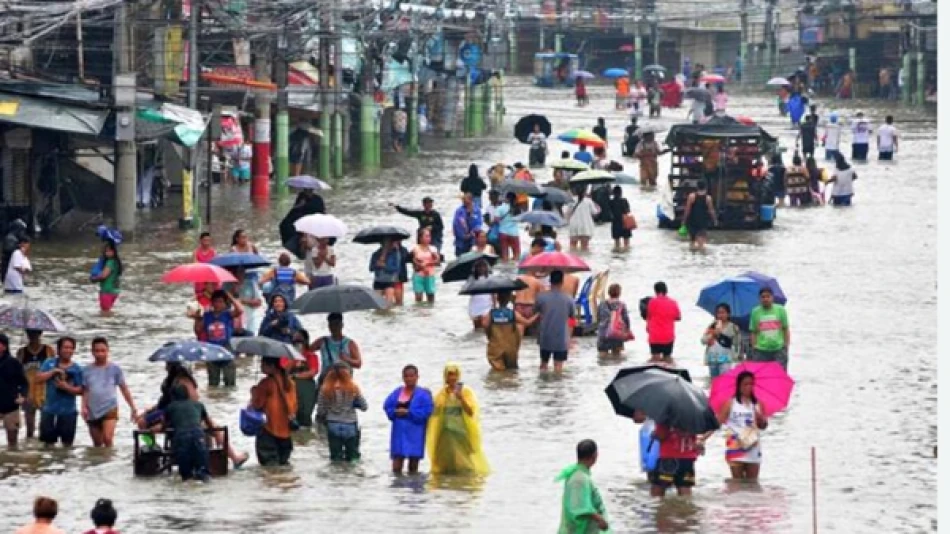
Tropical Storm Intensifies Weather Woes in the Philippines
Tropical Storm Ko-Mai Compounds Philippines' Deadly Weather Crisis as Death Toll Reaches 25
The Philippines faces mounting devastation as Tropical Storm Ko-Mai strikes the northern mountainous regions, intensifying a week-long weather catastrophe that has claimed at least 25 lives and forced mass evacuations across flood and landslide-prone communities. The storm marks the fifth weather disturbance to pummel the archipelago since monsoon season began last month, highlighting the country's escalating vulnerability to extreme weather events.
Storm's Destructive Path Through Luzon
Ko-Mai made landfall Thursday evening in Agno town, Pangasinan province, packing winds of 120 kilometers per hour with gusts reaching 165 km/h. The storm has since weakened as it tracks northeast, but not before amplifying the seasonal monsoon rains that have already saturated large swaths of the country for over a week.
Weather officials report that Ko-mai—known locally as "Emong"—has acted as a force multiplier for existing monsoon conditions rather than an isolated weather event. This compound effect has proven particularly deadly in the Philippines' mountainous terrain, where saturated soils become prone to catastrophic landslides.
Rising Casualty Count Reflects Broader Climate Vulnerability
Disaster response officials have confirmed 25 fatalities since last weekend, with deaths primarily attributed to flash floods, falling trees, and landslides. An additional eight people remain missing, though no direct casualties from Ko-Mai itself have been reported yet.
The death toll underscores a troubling pattern for the Philippines, which consistently ranks among the world's most disaster-prone nations. The country typically experiences 15-20 typhoons annually, but the intensity and frequency of severe weather events have increased in recent years, straining disaster preparedness systems.
Economic and Infrastructure Impact
The sustained weather crisis poses significant economic challenges for the Philippines, where agriculture employs nearly a quarter of the workforce. Prolonged flooding and landslides threaten rice harvests during a critical growing period, potentially impacting food security and inflation rates.
Infrastructure damage from repeated storms also diverts government resources from development projects to disaster recovery efforts. This cycle has become increasingly common as climate change intensifies weather patterns across Southeast Asia.
Regional Context: Southeast Asia's Weather Woes
The Philippines' current crisis reflects broader climate challenges facing Southeast Asian nations. Similar to how Thailand and Vietnam have grappled with intensifying monsoon seasons, the Philippines must balance immediate disaster response with long-term climate adaptation strategies.
Unlike more developed nations with extensive early warning systems and robust infrastructure, the Philippines' 7,641 islands present unique challenges for coordinated disaster response. Remote communities often remain cut off for days following severe weather, complicating rescue and relief efforts.
Looking Ahead: Monsoon Season Far From Over
With monsoon season typically lasting through October, the Philippines faces months of continued weather threats. The rapid succession of five weather disturbances since last month suggests an active storm season ahead, testing the resilience of communities still recovering from recent disasters.
Climate scientists increasingly point to warming ocean temperatures in the Western Pacific as a driver of more intense tropical cyclones. For the Philippines, this trend demands enhanced disaster preparedness infrastructure and more robust early warning systems to protect vulnerable populations in the storms' paths.
 Layla Al Mansoori
Layla Al Mansoori







